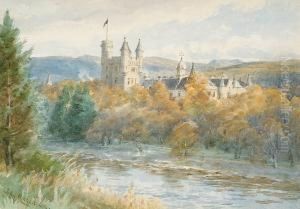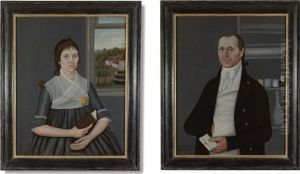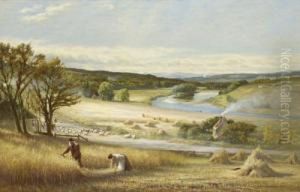John Mitchell Of Aberdeen Paintings
John Mitchell of Aberdeen, born in 1785, was a Scottish artist known primarily for his contributions to landscape painting and engraving. Mitchell's artistic journey began in his hometown of Aberdeen, Scotland, where the rugged landscapes and dynamic seascapes of the region deeply influenced his early work. Throughout his career, Mitchell developed a distinctive style that captured the essence of the Scottish countryside, combining meticulous detail with a profound appreciation for the natural beauty of his homeland.
Mitchell's work was characterized by its attention to the subtleties of light and shadow, a skill that allowed him to create landscapes that were both realistic and imbued with a sense of atmospheric depth. His engravings, in particular, were celebrated for their precision and ability to convey the texture and movement of the natural world. Despite the limited technology of the time, Mitchell's engravings stood out for their technical excellence and artistic integrity.
Throughout the early 19th century, Mitchell's reputation grew, and his works were exhibited in various prestigious venues, including the Royal Scottish Academy. His landscapes and engravings not only captured the beauty of the Scottish landscape but also reflected the broader Romantic movement that was sweeping through Europe at the time, emphasizing the power and majesty of nature.
Mitchell's contributions to Scottish art were not limited to his own creations. He was also a mentor to younger artists, imparting his knowledge and passion for landscape painting to the next generation. His influence helped shape the direction of Scottish landscape art in the 19th century, ensuring that the beauty of Scotland's natural environment continued to inspire artists long after his death in 1855.
Despite his significant contributions to the art world, John Mitchell of Aberdeen remains a relatively obscure figure in the broader history of European art. However, his work continues to be appreciated by connoisseurs of Scottish art and landscape painting, serving as a testament to his skill, vision, and deep love for the natural world.


